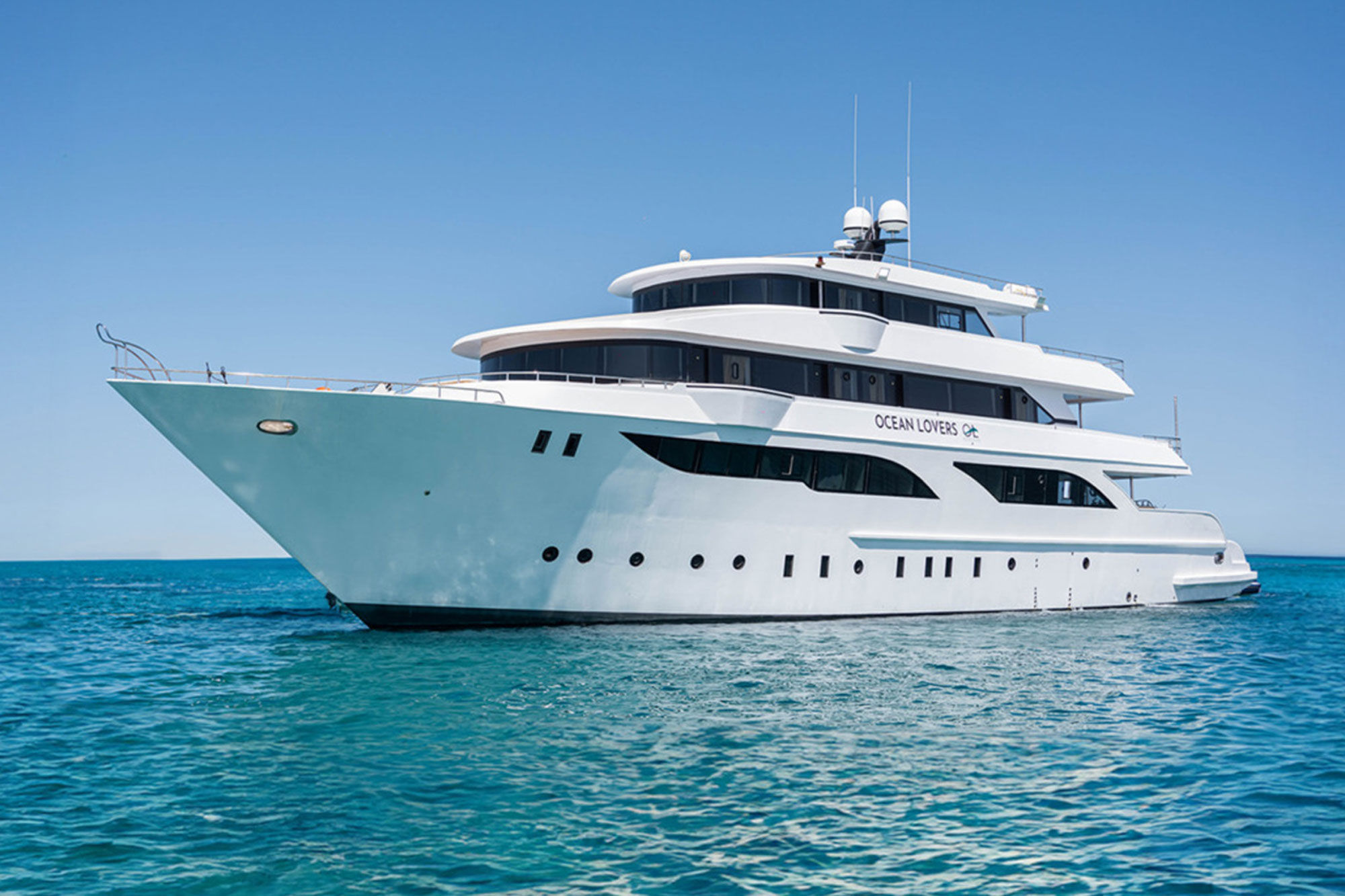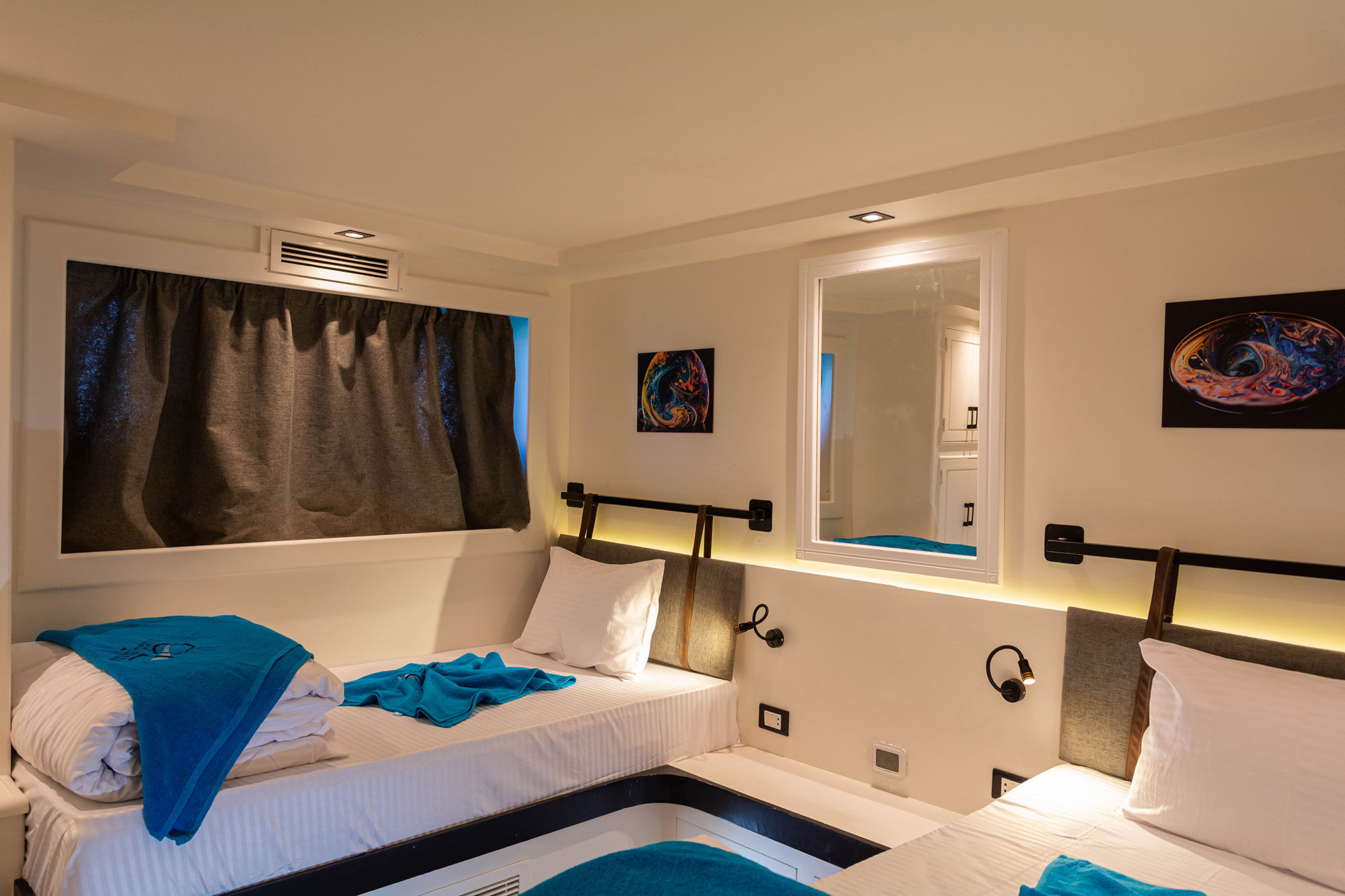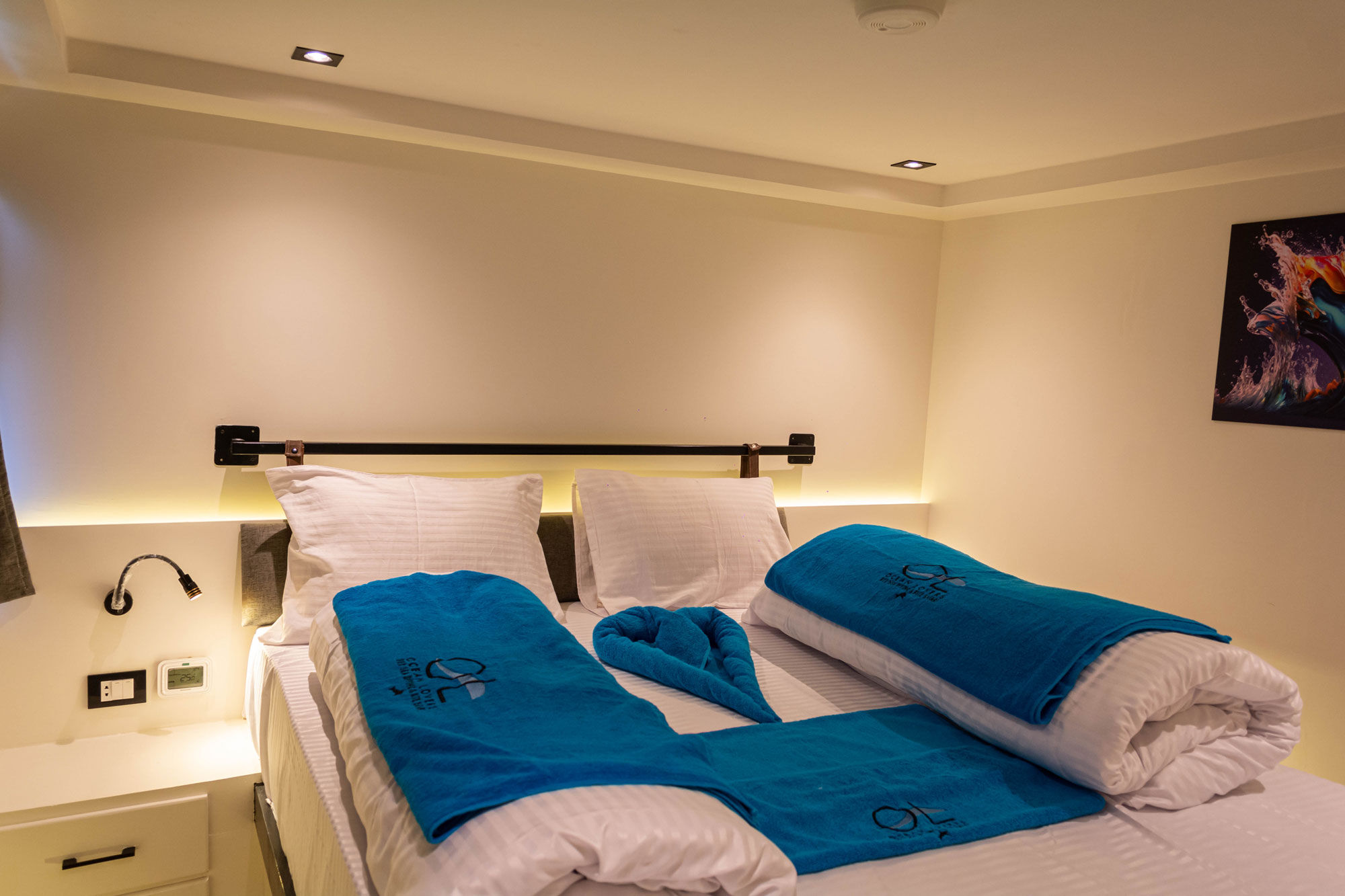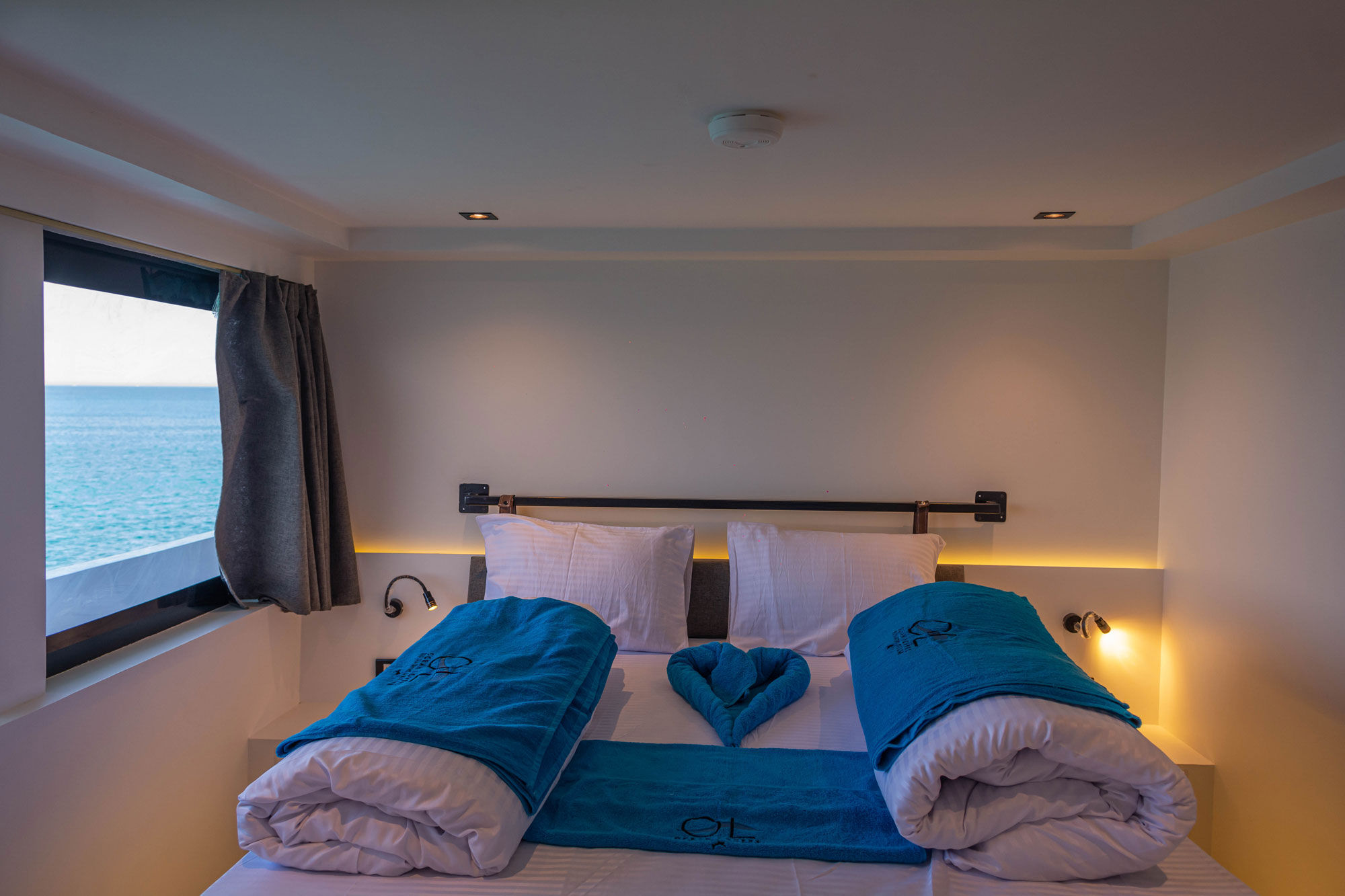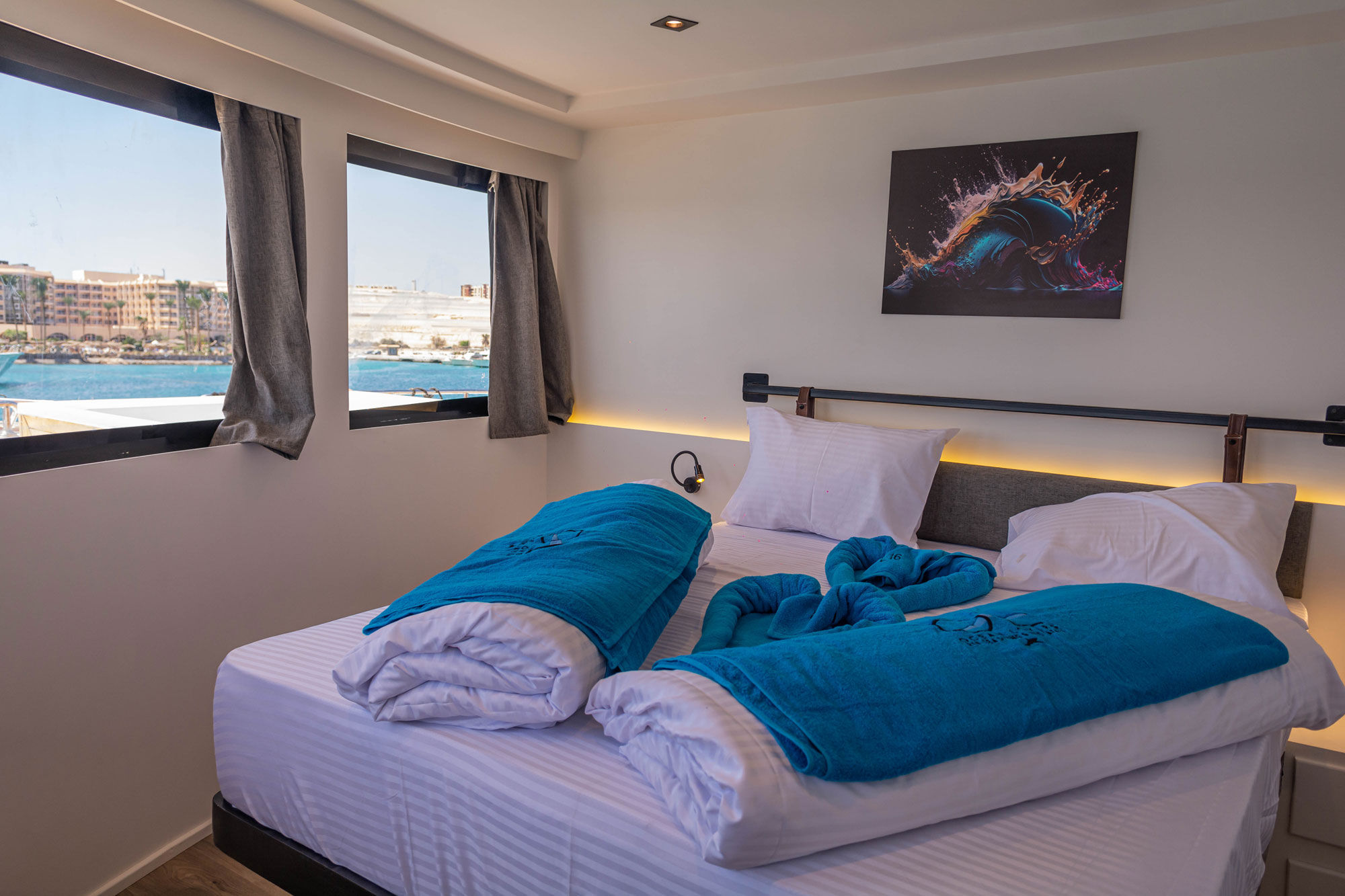日程安排
这次行程将带您探索著名的红海沉船和完美无瑕的珊瑚礁,以及由四个主要珊瑚礁组成的提兰潜水区,这些珊瑚礁在亚喀巴湾(Gulf of Aqaba)入口附近形成了一座水下桥梁。以四位英国制图师命名的这些珊瑚礁(Jackson, Woodhouse, Thomas 和 Gordon),因其惊人的珊瑚多样性以及由于强大的西南洋流而成为众多大型远洋鱼类的天堂而闻名于世。
最著名的沉船SS Thistlegorm是红海最知名的沉船。1941年10月6日,这艘长129米的英国货船被德国飞机炸毁。今天,她在最深32米的沙底构成了一个人工珊瑚礁。她特别受到大型聚群鱼类的喜爱,并且是多种海洋生物的家园。
Shaab Mahmoud形成的珊瑚障上中间有一个小裂缝。在外墙旁漂流时可以欣赏到惊艳的珊瑚和色彩斑斓的海洋生物。寻找一条沙坡以穿过裂缝。当洋流刚好时,您可以穿过5米深的通道,并被推进到沙质泻湖中!Gubal Island的“Bluff Point”位于古巴尔海峡入口处,因海岛东墙强烈的洋流使水面翻腾而得名。灯塔北300米的珊瑚礁上是"Ulysses"的残骸。其深度从5到25米不等。潜水员可以在灯塔以南找到"The Barge"沉船,为潜水者提供独特有趣的夜潜体验。沉船的骨架保护了各种夜间生物。
Abu Nuhas: 被称为“船舶坟场”,这片珊瑚礁位于苏伊士湾最繁忙的航道附近,地势险峻。这里失去的船只数量比其他任何附近的珊瑚礁都多。在北侧,陡峭的珊瑚礁上覆盖着层层台状珊瑚,四艘沉船Giannis D、Carnatic、Chrisoula K和Kimon M都躺在沙质海底。南侧有一个安全的船宿锚地,也提供绝佳的夜潜体验。海豚是这片珊瑚礁的常客。在西奈半岛的尽头有一个潜点称为Ras Mohamed Reef。下沉到深渊的垂直墙壁连接着两个小珊瑚柱。您可以沿着被色彩斑斓的珊瑚覆盖的Shark Reef墙壁漂流。当您靠近Yolanda Reef时,会看到一个点缀着小珊瑚礁和珊瑚突出的高原。继续环绕珊瑚礁,您会发现有浴缸和马桶货物的Yolanda沉船残骸。要小心蓝色区域,因为大鱼栖息在整个区域!
Jackson Reef是最远的珊瑚礁,其北侧的货船残骸对穿越拥挤海峡的船只提供了一个明显的警告。受主浪和洋流保护的南侧系泊处是通常进行潜水的地方。北行时,您将会在20到30米的深度找到一片壮观的海扇珊瑚森林,及众多种类的珊瑚礁生物。在提兰海峡的四个珊瑚礁中,Woodhouse Reef是最长的。它是一个漂流潜水点,通常从南向北潜水。这里是礁鲨和鹰鳐的栖息地。沿珊瑚礁南侧有一面墙壁,其深度约为30米,完全被珊瑚覆盖。在珊瑚礁的25米左右有一个峡谷,通向一个底部为沙地的珊瑚花园。
提兰海峡中最小的珊瑚礁是Thomas Reef,由于极强的洋流,潜水依赖于天气状况。东南侧有一个约25米的宽大高原,末端有垂直墙。在这个高原的沙区,常常有鲨鱼睡觉,而多彩的珊瑚末端是一个由海扇珊瑚制成的栅栏。
四个珊瑚礁中最南边的Gordon Reef地形与其他不同,拥有一个浅高原和陡坡。这里可以见到大型石斑鱼群和大量的珊瑚礁鱼类。在4到5米的深度,可以在沙质地上看到一个鳗鱼花园。沉船Lovilla位于Jackson Reef上的那一沉船的几乎并行的位置,旁边还有一个灯塔。
Day 1:
从下午4点开始办理登船入住。
欢迎会和安全简介。
晚餐。
Day 2:
第一次潜水 - Poseidon Reef。
第二次潜水 - Abu Nuhas(Giannis D.沉船)。
第三次潜水 - Shaab Mahmoud(夜潜)。
Day 3:
第一次潜水 - Dunraven沉船。
第二次潜水 - Ras Mohamed。
第三次潜水 - Ras Mohamed。
第四次潜水 - Gordon Reef(夜潜)。
Day 4:
第一次潜水 - Jackson Reef。
第二次潜水 - Thomas Reef。
第三次潜水 - Thistlegorm沉船。
第四次潜水 - Thistlegorm(夜潜)。
Day 5:
第一次潜水 - Thistlegorm沉船。
第二次潜水 - Kingston沉船。
第三次潜水 - Gubal Island。
第四次潜水 - The Barge(夜潜)。
Day 6:
第一次潜水 - Ulysses沉船。
第二次潜水 - Abu Nuhas(Carnatic沉船)。
第三次潜水 - Abu Nuhas(Chrisoula K.沉船)。
第四次潜水 - Dolphin House(夜潜)。
Day 7:
第一次潜水 - Dolphin House。
第二次潜水 - El Mina沉船。
Day 8:
早餐。
最晚于上午10点退房。
(*)行程描述由船运营商提供。
最后一次潜水将在行程倒数第二天的上午10点左右。建议潜水员在最后一次潜水后等待24小时再飞行。
行程样本和地图仅供说明用途。确切的路线和访问地点可能会根据当地规定、游客体验、天气和后勤以及船长的判断进行更改。
 微信扫码添加人工客服
微信扫码添加人工客服